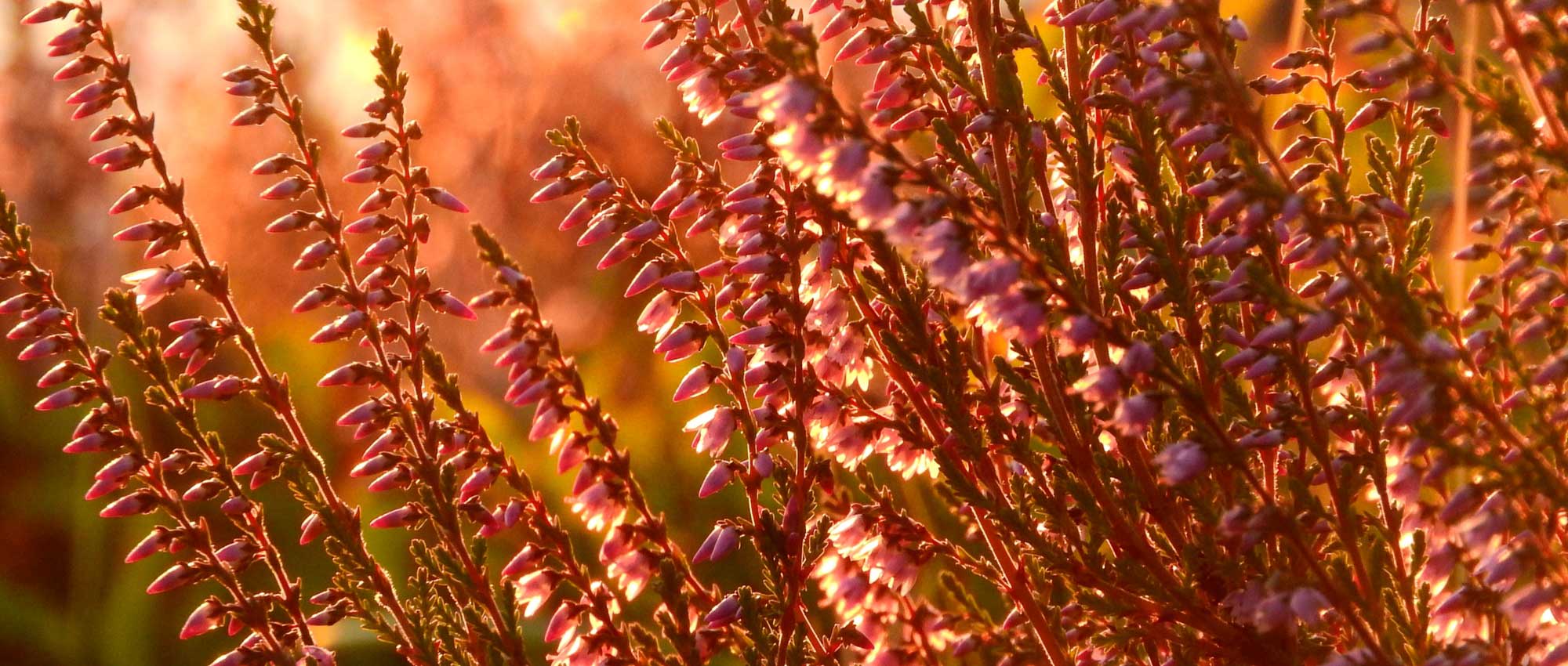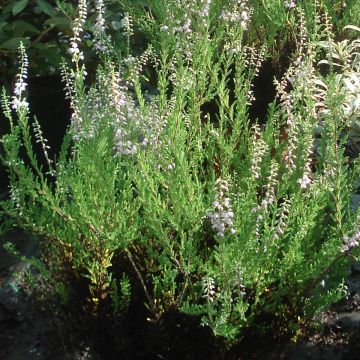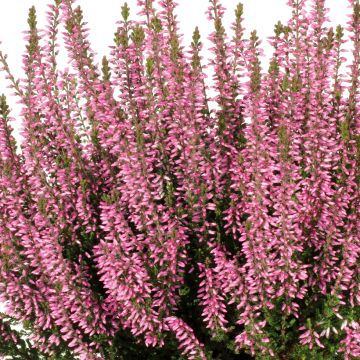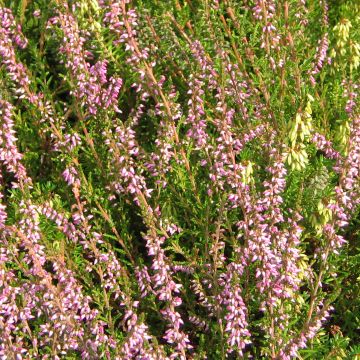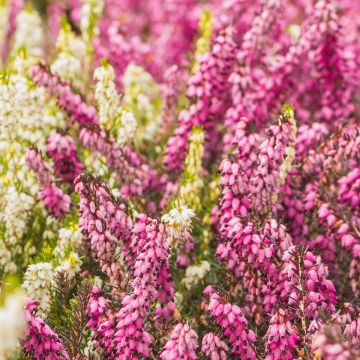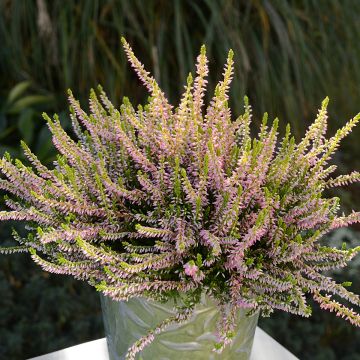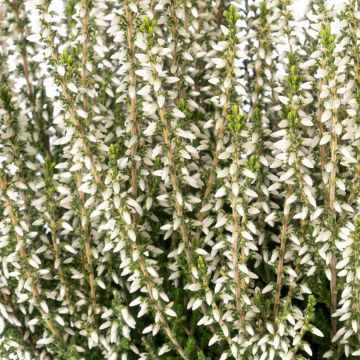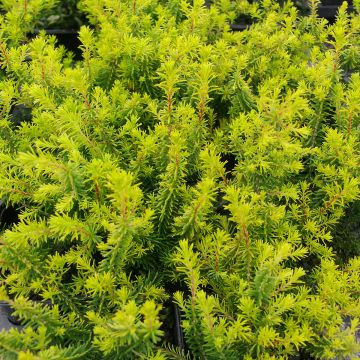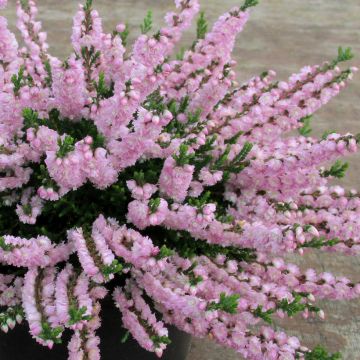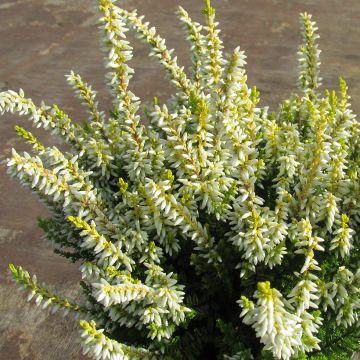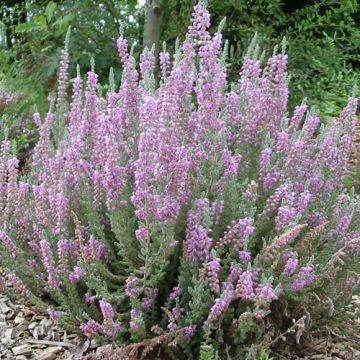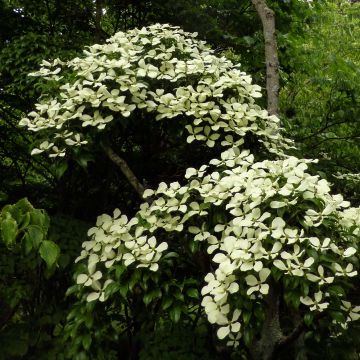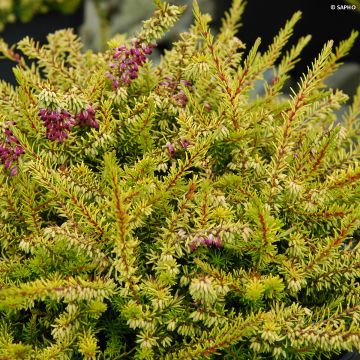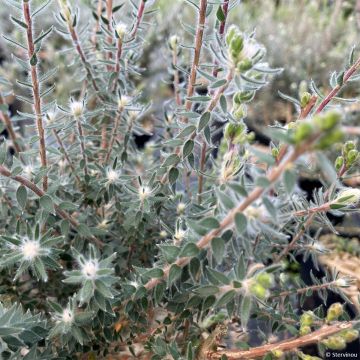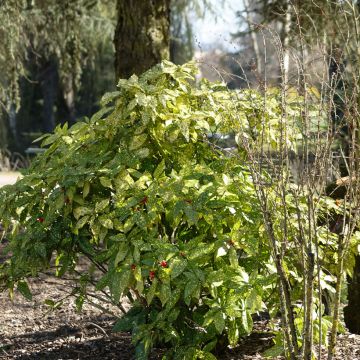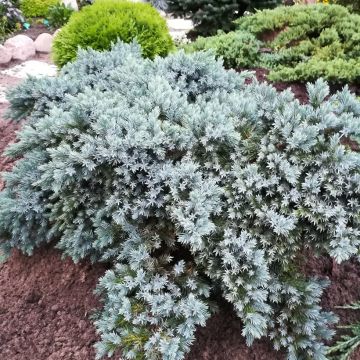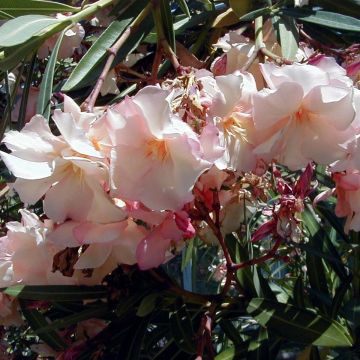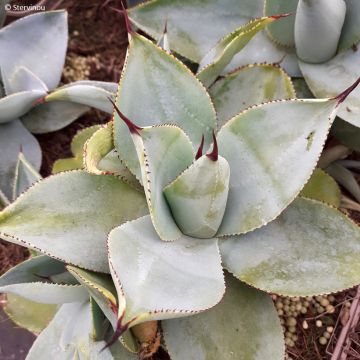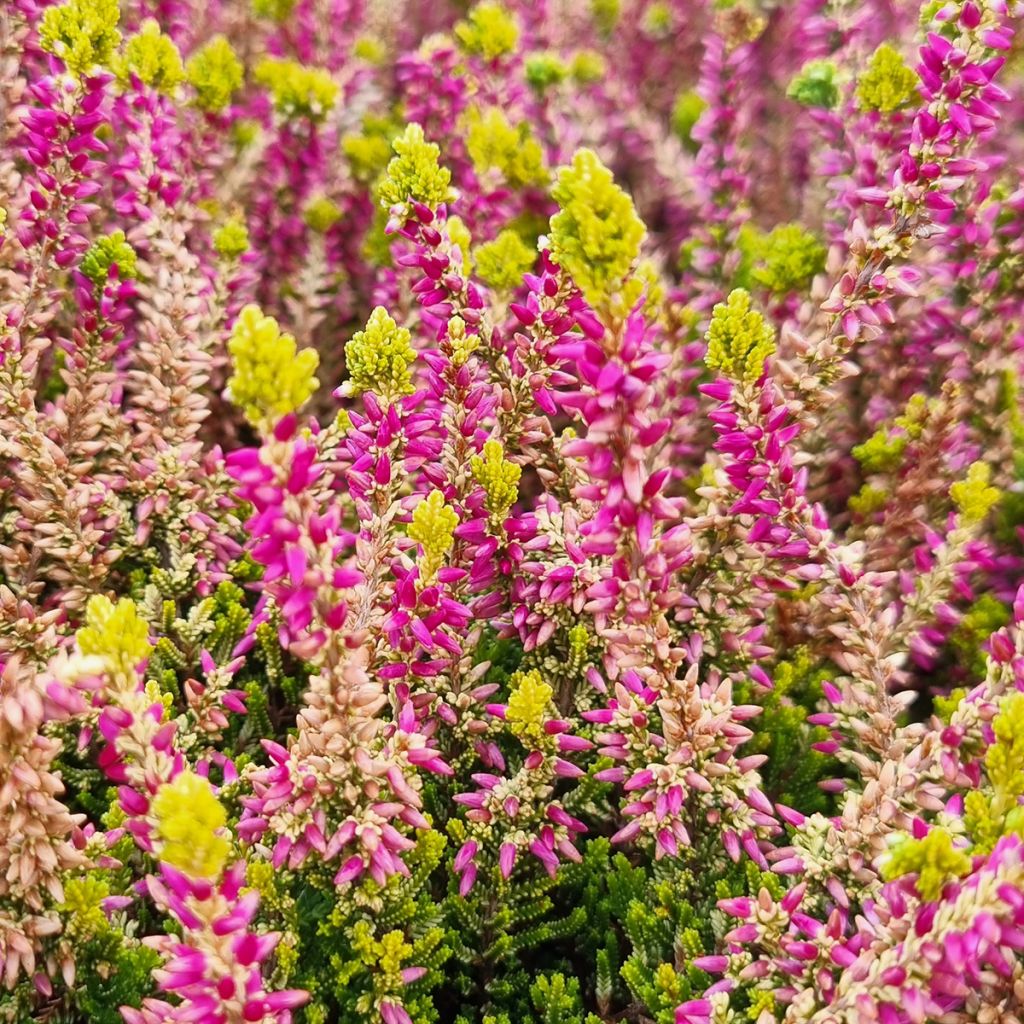

Calluna vulgaris Golden Angie - Heather
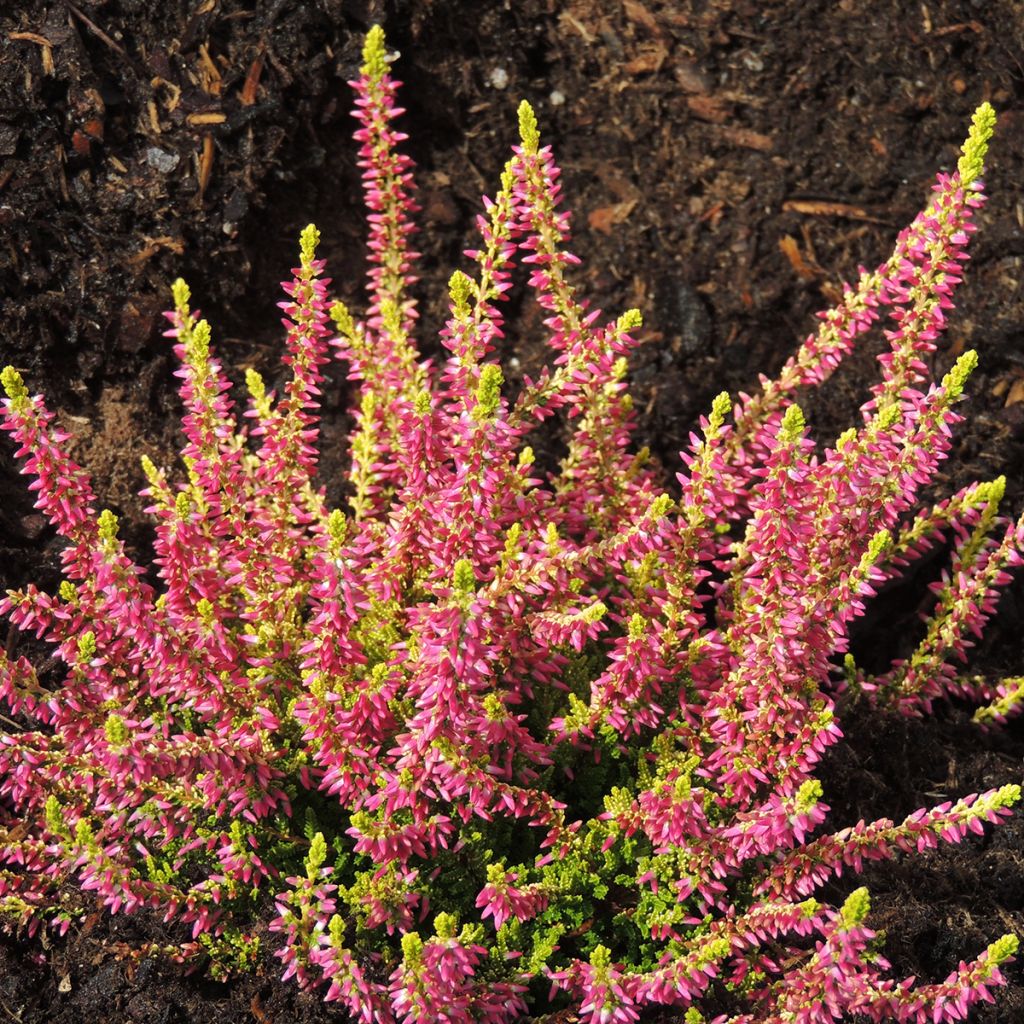

Calluna vulgaris Golden Angie - Heather
Calluna vulgaris Golden Angie - Heather
Calluna vulgaris Golden Angie (GARDENGIRLS® series)
Common Heather, Ling
Special offer!
Receive a €20 voucher for any order over €90 (excluding delivery costs, credit notes, and plastic-free options)!
1- Add your favorite plants to your cart.
2- Once you have reached €90, confirm your order (you can even choose the delivery date!).
3- As soon as your order is shipped, you will receive an email containing your voucher code, valid for 3 months (90 days).
Your voucher is unique and can only be used once, for any order with a minimum value of €20, excluding delivery costs.
Can be combined with other current offers, non-divisible and non-refundable.
Home or relay delivery (depending on size and destination)
Schedule delivery date,
and select date in basket
This plant carries a 12 months recovery warranty
More information
We guarantee the quality of our plants for a full growing cycle, and will replace at our expense any plant that fails to recover under normal climatic and planting conditions.
Would this plant suit my garden?
Set up your Plantfit profile →
Description
Calluna vulgaris Garden Girls 'Golden Angie' is a summer heather in gold and red, blazing under the gentle autumn sun. It belongs to the prolific Garden Girls series: its floral buds in small pearls remain closed. Unpollinated, they have an extended lifespan for long-lasting flowering, unaffected by bad weather. 'Golden Angie' has evergreen foliage in golden yellow, adorned with bright red flower buds that turn pink when ripe.
Calluna vulgaris Garden Girls 'Golden Angie' belongs to the Ericaceae family. Its ancestor, the common heather, the only species in the genus Calluna, constitutes the dominant vegetation of barren heathlands in the cold regions of the UK and Northern Europe. 'Golden Angie' is a persistent shrub that forms small, curly bushes with a broad and erect habit, reaching about 50 cm (20in) in height and width after 3 years of cultivation. Decorative all year round thanks to its beautiful evergreen foliage, this cultivar blooms from August to November. Its floral buds are arranged in upright and flexible spikes. The yellow-green to golden coloring of its foliage is very bright.
The 'Golden Angie' Summer Heather' is a light and refined plant, which thrives in any acidic, moist to dry soil, in full sun or partial shade. It brings elegance to wild areas of the garden as well as to weekend or low-maintenance gardens. Stunning when planted em masse with other species and varieties, it also pairs beautifully with dwarf asters and short ornamental grasses, in rockeries, on slopes, or in informal borders. In a heathland bed, it can be planted at the base of witch hazels, Pieris, or Skimmia japonica. On the patio or balcony, it fills pots and containers, creating autumnal floral compositions with small perennials and bulbs.
Calluna vulgaris tolerates moderate grazing. It represents an important food source for sheep and deer when vegetation is covered in snow. It is capable of regenerating after fire. In the past, this plant was considered magical and used in white magic rituals; it was believed to have protective powers, as in the Breton heaths, where it is said to ward off ghostly spirits. Calluna is also an ingredient in gruit, an aromatic composition used in brewing beer before the use of hops in the Middle Ages. Its flowering tops have been used in herbal medicine for a long time, as they are reputed to 'dissolve gallstones in the bladder'.
Calluna vulgaris Golden Angie - Heather in pictures
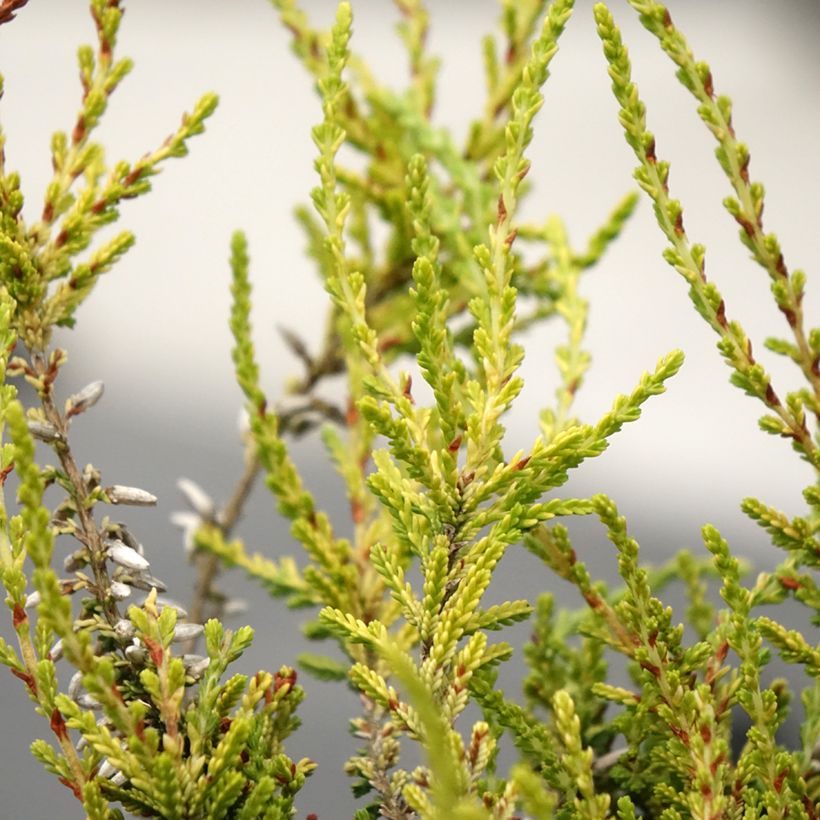

Flowering
Foliage
Plant habit
Botanical data
Calluna
vulgaris
Golden Angie (GARDENGIRLS® series)
Ericaceae
Common Heather, Ling
Cultivar or hybrid
Other Calluna - Common Heather
View all →Planting and care
The heather is a characteristic plant of heathlands, turf moors, and pine forests. The Golden Angie Garden Girls variety, like it, is very hardy. It requires a light and sandy soil, without limestone, well-drained, and genuinely acidic (for example, composed of 1/3 heath soil, 1/3 non-limestone soil, and 1/3 sand), and thrives in a sunny or partially shaded exposure. In northern regions, it is possible to plant them in full sun, while in hot climates, a partially shaded exposure is preferable. In order to maintain a dense and compact habit, the plant should be lightly pruned in late winter or just after flowering.
Planting period
Intended location
Care
Planting & care advice
This item has not been reviewed yet - be the first to leave a review about it.
Similar products
Haven't found what you were looking for?
Hardiness is the lowest winter temperature a plant can endure without suffering serious damage or even dying. However, hardiness is affected by location (a sheltered area, such as a patio), protection (winter cover) and soil type (hardiness is improved by well-drained soil).

Photo Sharing Terms & Conditions
In order to encourage gardeners to interact and share their experiences, Promesse de fleurs offers various media enabling content to be uploaded onto its Site - in particular via the ‘Photo sharing’ module.
The User agrees to refrain from:
- Posting any content that is illegal, prejudicial, insulting, racist, inciteful to hatred, revisionist, contrary to public decency, that infringes on privacy or on the privacy rights of third parties, in particular the publicity rights of persons and goods, intellectual property rights, or the right to privacy.
- Submitting content on behalf of a third party;
- Impersonate the identity of a third party and/or publish any personal information about a third party;
In general, the User undertakes to refrain from any unethical behaviour.
All Content (in particular text, comments, files, images, photos, videos, creative works, etc.), which may be subject to property or intellectual property rights, image or other private rights, shall remain the property of the User, subject to the limited rights granted by the terms of the licence granted by Promesse de fleurs as stated below. Users are at liberty to publish or not to publish such Content on the Site, notably via the ‘Photo Sharing’ facility, and accept that this Content shall be made public and freely accessible, notably on the Internet.
Users further acknowledge, undertake to have ,and guarantee that they hold all necessary rights and permissions to publish such material on the Site, in particular with regard to the legislation in force pertaining to any privacy, property, intellectual property, image, or contractual rights, or rights of any other nature. By publishing such Content on the Site, Users acknowledge accepting full liability as publishers of the Content within the meaning of the law, and grant Promesse de fleurs, free of charge, an inclusive, worldwide licence for the said Content for the entire duration of its publication, including all reproduction, representation, up/downloading, displaying, performing, transmission, and storage rights.
Users also grant permission for their name to be linked to the Content and accept that this link may not always be made available.
By engaging in posting material, Users consent to their Content becoming automatically accessible on the Internet, in particular on other sites and/or blogs and/or web pages of the Promesse de fleurs site, including in particular social pages and the Promesse de fleurs catalogue.
Users may secure the removal of entrusted content free of charge by issuing a simple request via our contact form.
The flowering period indicated on our website applies to countries and regions located in USDA zone 8 (France, the United Kingdom, Ireland, the Netherlands, etc.)
It will vary according to where you live:
- In zones 9 to 10 (Italy, Spain, Greece, etc.), flowering will occur about 2 to 4 weeks earlier.
- In zones 6 to 7 (Germany, Poland, Slovenia, and lower mountainous regions), flowering will be delayed by 2 to 3 weeks.
- In zone 5 (Central Europe, Scandinavia), blooming will be delayed by 3 to 5 weeks.
In temperate climates, pruning of spring-flowering shrubs (forsythia, spireas, etc.) should be done just after flowering.
Pruning of summer-flowering shrubs (Indian Lilac, Perovskia, etc.) can be done in winter or spring.
In cold regions as well as with frost-sensitive plants, avoid pruning too early when severe frosts may still occur.
The planting period indicated on our website applies to countries and regions located in USDA zone 8 (France, United Kingdom, Ireland, Netherlands).
It will vary according to where you live:
- In Mediterranean zones (Marseille, Madrid, Milan, etc.), autumn and winter are the best planting periods.
- In continental zones (Strasbourg, Munich, Vienna, etc.), delay planting by 2 to 3 weeks in spring and bring it forward by 2 to 4 weeks in autumn.
- In mountainous regions (the Alps, Pyrenees, Carpathians, etc.), it is best to plant in late spring (May-June) or late summer (August-September).
The harvesting period indicated on our website applies to countries and regions in USDA zone 8 (France, England, Ireland, the Netherlands).
In colder areas (Scandinavia, Poland, Austria...) fruit and vegetable harvests are likely to be delayed by 3-4 weeks.
In warmer areas (Italy, Spain, Greece, etc.), harvesting will probably take place earlier, depending on weather conditions.
The sowing periods indicated on our website apply to countries and regions within USDA Zone 8 (France, UK, Ireland, Netherlands).
In colder areas (Scandinavia, Poland, Austria...), delay any outdoor sowing by 3-4 weeks, or sow under glass.
In warmer climes (Italy, Spain, Greece, etc.), bring outdoor sowing forward by a few weeks.






























